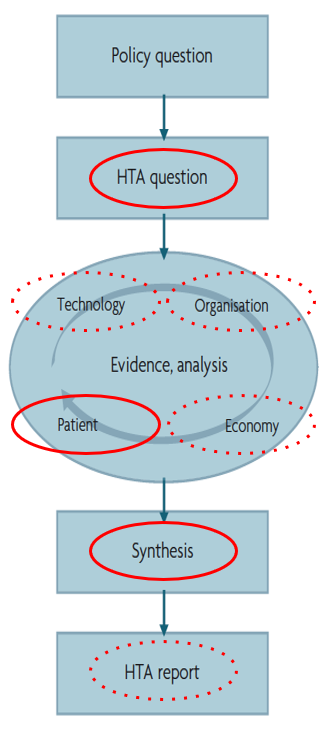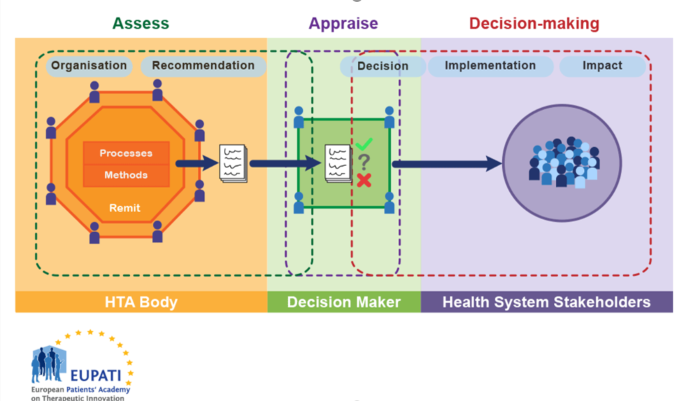5. Patient involvement in different phases of HTA
1. Patient involvement in different phases of HTA
(This section is organised in the form of a book, please follow the blue arrows to navigate through the book or by following the navigation panel on the right side of the page.)
The below figure shows the simplified HTA process and where patients should have a prominent role (shown by solid lines) and where patients have a less prominent role (shown by dotted lines).

Figure 1 HTA process and patients’ role
Some HTA bodies have recently defined the patient perspective as one out of four pillars that should be evaluated:
- clinical effect and safety
- patient perspective
- health care organisation
- economy
This is seen as a both ethical and democratic requirement even though it does not diminish complexity in the HTA process. It is, however, noteworthy that the need for patient engagement and thorough understanding of the patient's perspectives, experiences, needs and preferences is gaining higher recognition by policy makers and HTA bodies.
As patient organisations become familiar with HTAs they are increasing their engagement in debates about policy priorities and access. And they influence HTA recommendations to inform action and lobbying to access new therapies or improve the usage of existing therapies.
Below is a list of various aspects where patients contribute [1,3,4]:
- Serving as members of HTA boards, committees, and workgroups.
- Identifying potential topics for HTA.
- Setting priorities among HTA topics.
- Identifying potential target groups for HTA reports early.
- Identifying health outcomes and other impacts (economic, social, etc.) to be assessed.
- Contributing to the development of instruments that measure what matters to patients (e.g., HRQoL).
- Reviewing proposals or bids by outside organisations/contractors to conduct HTAs.
- Providing expert input to an appraisal committee.
- Submitting evidence for HTAs.
- Reviewing draft HTA reports and recommendations.
- Helping to design and prepare patient-friendly HTA report summaries.
- Dissemination of HTA findings within patient groups, and other target groups.
- Evaluating the use of HTA recommendations.
We can consider the entire HTA process as shown in Figure 2 below, which also outlines the different ways that patients can be involved in the full HTA, decision-making and implementation process.

Figure 2 HTA involvment in the health system